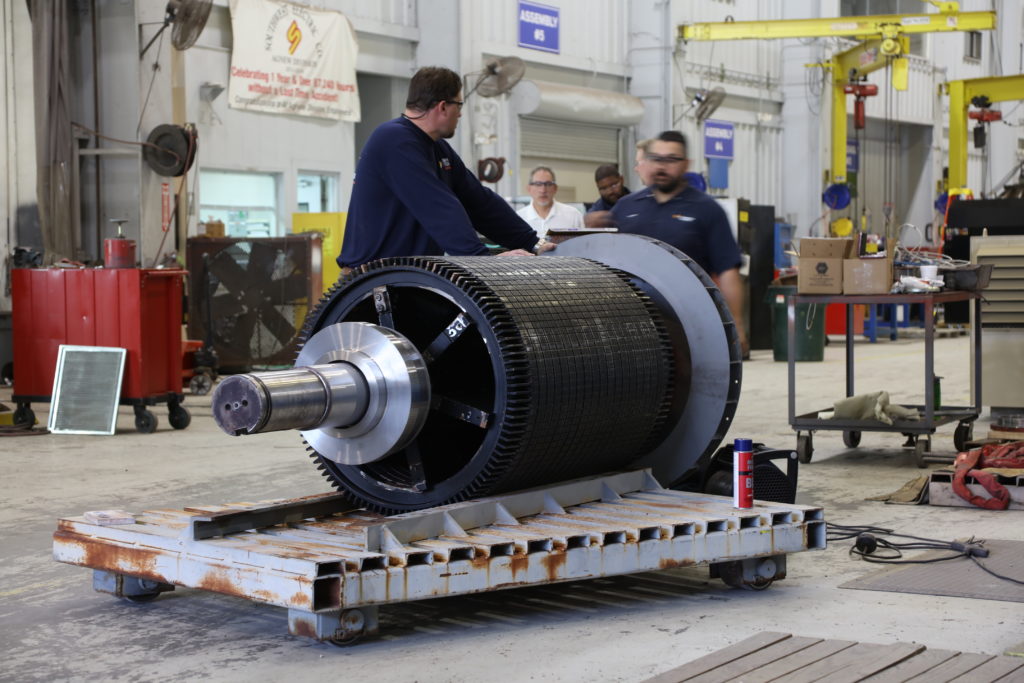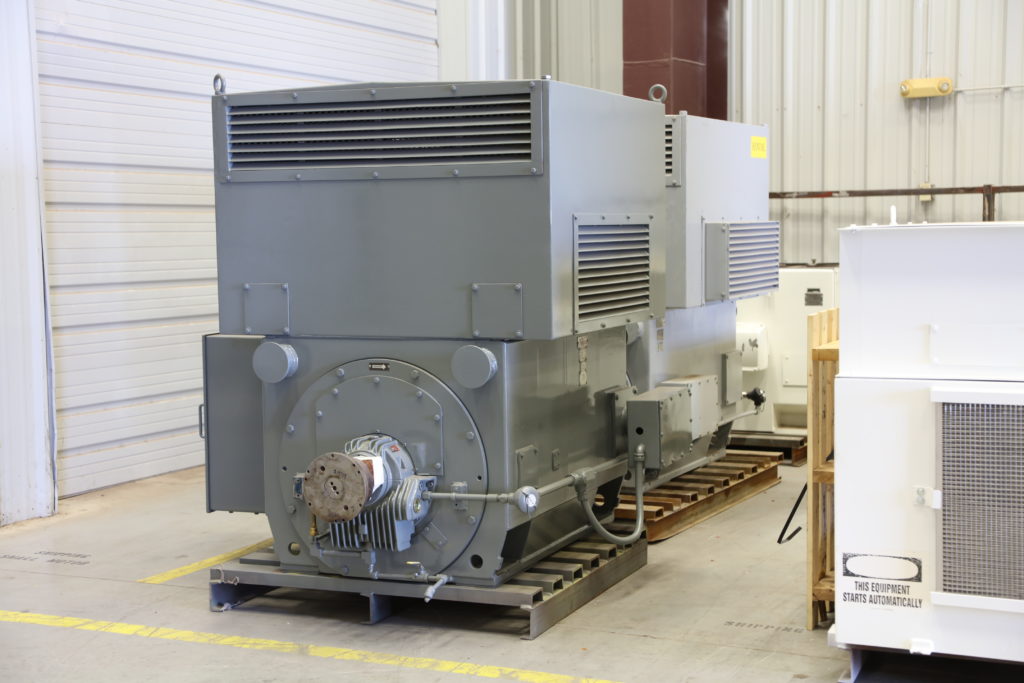By Mike Switzer, Product Line Manager - Motors
Electrical AC motor issues can arise from a variety of causes and, if ignored, may result in equipment inefficiency or failure. Problems can happen with motors both used and new, from any manufacturer. It is important to know what kind of issues to look for so that you can begin to troubleshoot and increase your motor’s longevity. This article will explain 4 common areas where AC Motor issues can be identified and their possible causes.
Contact Us For Expert Motor Advice & Services
1 – Mechanical Motor Issues
Some mechanical AC motor issues to look out for include improper bearing installation, mechanical tolerances from the shaft OD, as well as bearing housing ID measurements, which can affect the bearing’s ability to run smoothly during its life cycle. It is also important to watch for uneven surfaces on the bearing journal shoulder and look for bearings captured in the housing fits.
A properly installed bearing must also be lubricated to prevent mechanical problems. Most bearings are lubricated from the bearing manufacturer with the proper amount of grease and are received with some type of protective shield on the bearing. The assembler must also be aware of how much grease to place in either the bearing retainer or grease cavity inside the bearing housing. Other bearing issues could be due to improper alignment during installation.
2 – Electrical Motor Problems

A leading cause of electrical issues is poor or old insulation. Per IEEE standards, it is not mandatory to surge test old or used windings. The windings can be surge tested at 75% of recommended surge values of a new or rewound winding. This test is a good indicator of the insulation and turn-to-turn integrity, especially if the motor has been running for a lengthy period of time. A good megohmmeter test is also recommended to check the insulation resistance to ground. The most common reason for bad insulation resistance is overheating. This can be caused by the area or environment around the motor. Keeping the exterior of an AC motor free of debris is the best way to allow the motor to keep as cool as possible while under load.
Electrical overloading is another issue that can arise. When a motor is in overload conditions, the insulation will break down extremely quickly. When this happens, it is certain that the motor will fail to ground, short phase-to-phase, and/or experience a turn-turn short. Using current protection is a way of preventing an overload failure and costly repair.
Keep in mind that water and electricity do not mix. If a motor is subjected to a harsh and wet environment, it is important that the motor was designed for this type of application to prevent bearing damage or premature failure from moisture inside of the motor. A proper enclosure is important to protect the motor and avoid expensive, excessive repairs.
3 – AC Motor Enclosure Types

Every motor in the industry has an enclosure associated with it. It is very important that the proper enclosure is chosen for its respective environment in order to avoid issues or motor failure. Below is a list of the different types of AC motor enclosures.
- ODP – Open Drip Proof
- TEFC – Totally Enclosed Fan Cooled
- TEFV – Totally Enclosed Forced Ventilated
- TENV – Totally Enclosed Non-Ventilated
- TEAO – Totally Enclosed Air Over
- TEWC or TEWAC – Totally Enclosed Water Cooled
- XP or EXPL – Explosion Proof
- WPI – Weather Protected (This type of enclosure is an enhanced version of the ODP enclosure. Screens are largely used in manufacturing to prevent large particles from entering the motor. This is prevalent on vertical motors.)
- WPII – Weather Protected (These enclosures feature ventilation passages that allow high-velocity air and air particles to discharge without entering the internal ventilating passages. The flow path is designed to include at least three abrupt changes in direction, none of which to be less than 90 degrees. Vertical motors that are totally enclosed are referred to as WPII enclosures.)
4 – Excessive Motor Vibration
Motors should be checked periodically for excessive vibration, which can be a destructive force mechanically and, if severe, electrically. Some of the issues that can cause vibration include:
- Poor misalignment
- Imprecise rotor balancing during a repair
- Compacted dirt inside the rotor assembly
- Energy transferred from the driven equipment back into the motor through the coupling
- Loose mounting base
Conclusion
When you encounter AC motor issues, Southwest Electric Co. is here to cover all steps of the repair process to make your motor run like new and extend the overall life cycle. With motor shops located in both Oklahoma and Tennessee, we’re experienced at creating and implementing custom maintenance programs that will maximize the life of your motor applications. Give us a call or email to get in touch with us today!